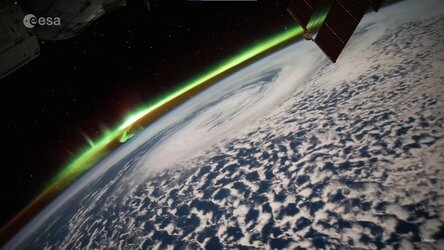Accept all cookies Accept only essential cookies See our Cookie Notice

About ESA
The European Space Agency (ESA) is Europe’s gateway to space. Its mission is to shape the development of Europe’s space capability and ensure that investment in space continues to deliver benefits to the citizens of Europe and the world.
Highlights
ESA - United space in Europe
This is ESA ESA facts Member States & Cooperating States Funding Director General Top management For Member State Delegations European vision European Space Policy ESA & EU Space Councils Responsibility & Sustainability Annual Report Calendar of meetings Corporate newsEstablishments & sites
ESA Headquarters ESA ESTEC ESA ESOC ESA ESRIN ESA EAC ESA ESAC Europe's Spaceport ESA ESEC ESA ECSAT Brussels Office Washington OfficeWorking with ESA
Business with ESA ESA Commercialisation Gateway Law at ESA Careers Cyber resilience at ESA IT at ESA Newsroom Partnerships Merchandising Licence Education Open Space Innovation Platform Integrity and Reporting Administrative Tribunal Health and SafetyMore about ESA
History ESA Historical Archives Exhibitions Publications Art & Culture ESA Merchandise Kids Diversity ESA Brand Centre ESA ChampionsLatest
Space in Member States
Find out more about space activities in our 23 Member States, and understand how ESA works together with their national agencies, institutions and organisations.
Science & Exploration
Exploring our Solar System and unlocking the secrets of the Universe
Go to topicAstronauts
Missions
Juice Euclid Webb Solar Orbiter BepiColombo Gaia ExoMars Cheops Exoplanet missions More missionsActivities
International Space Station Orion service module Gateway Concordia Caves & Pangaea BenefitsLatest
Space Safety
Protecting life and infrastructure on Earth and in orbit
Go to topicAsteroids
Asteroids and Planetary Defence Asteroid danger explained Flyeye telescope: asteroid detection Hera mission: asteroid deflection Near-Earth Object Coordination CentreSpace junk
About space debris Space debris by the numbers Space Environment Report In space refuelling, refurbishing and removingSafety from space
Clean Space ecodesign Zero Debris Technologies Space for Earth Supporting Sustainable DevelopmentLatest
Applications
Using space to benefit citizens and meet future challenges on Earth
Go to topicObserving the Earth
Observing the Earth Future EO Copernicus Meteorology Space for our climate Satellite missionsCommercialisation
ESA Commercialisation Gateway Open Space Innovation Platform Business Incubation ESA Space SolutionsLatest
Enabling & Support
Making space accessible and developing the technologies for the future
Go to topicBuilding missions
Space Engineering and Technology Test centre Laboratories Concurrent Design Facility Preparing for the future Shaping the Future Discovery and Preparation Advanced Concepts TeamSpace transportation
Space Transportation Ariane Vega Space Rider Future space transportation Boost! Europe's Spaceport Launches from Europe's Spaceport from 2012Latest

Aurora Australis
Thank you for liking
You have already liked this page, you can only like it once!
Many people hope to catch a glimpse of these reddish-green swirls of colour floating in the polar skies. Few are as lucky as ESA astronaut Tim Peake, who captured this dazzling display of the aurora Australis from the International Space Station during his mission in 2016.
This stunning display of light splashed across the sky is a product of severe solar wind lashing against Earth’s protective magnetic shield.
But beauty often comes at a price, and the cost of the aurora, popularly known as the Northern or Southern Lights depending on the hemisphere, is constant surveillance of the Sun.
The giver of light and heat and a key enabler of life on our planet, our Sun is also a volatile ball of hot gas 1.3 million times larger than Earth. Though 4.6 billion years old, the Sun keeps on churning, emitting constant streams of electrons, protons and atomic particles, into space.
On its particularly active days, the Sun can throw out a Coronal Mass Ejection or CME, an outburst of colossal clouds of solar plasma that, if colossal enough, could have serious consequences for life on Earth. One such ejection produced a geomagnetic storm powerful enough to cause a nine-hour outage of electricity in Canada in 1989.
Changing conditions in space due to solar activity is known as space weather and some days it ‘rains’ electrons and protons. Geomagnetic storms can affect the vital systems on which our modern societies depend, such as satellites, communication networks or power grids.
So what is ESA doing about space weather?
We cannot control our Sun, but timely alerts – like those to be enabled by ESA’s future Lagrange solar warning mission – will allow civil authorities and commercial actors to take protective measures, helping minimise economic losses and avoid a disaster that could affect all of us. Advance warning of an oncoming solar storm would give operators of satellites, power grids and telecommunication systems time to take protective measures, sometimes as simple as turning off the devices.
Watching the Sun from a unique position in space, the Lagrange satellite will allow monitoring of the potentially hazardous sunspots and high-speed solar wind streams before they come into view from Earth, and detect solar events and their propagation toward our planet with higher accuracy than is possible today.
Through to 5 March, ESA is celebrating Space Weather Days, focusing on the aurora. The highlight is the #AuroraHunters Social Space event taking place in Tromsø, Norway, 3–5 March, in which 30 invited participants from 13 countries gather for briefings on space weather, visits to geophysical observatories studying interactions between Earth and the Sun and – of course – aurora viewing at night (weather permitting!).
If you are lucky enough to glimpse the aurora, though beautiful and harmless, remember that they are the product of the cohabitation with an active star that can do real damage to daily life.
-
CREDIT
ESA/NASA -
LICENCE
ESA Standard Licence

Aurora Australis

Aurora and clouds

Aurora Australis

Aurora Australis from Space Station















 Germany
Germany
 Austria
Austria
 Belgium
Belgium
 Denmark
Denmark
 Spain
Spain
 Estonia
Estonia
 Finland
Finland
 France
France
 Greece
Greece
 Hungary
Hungary
 Ireland
Ireland
 Italy
Italy
 Luxembourg
Luxembourg
 Norway
Norway
 The Netherlands
The Netherlands
 Poland
Poland
 Portugal
Portugal
 Czechia
Czechia
 Romania
Romania
 United Kingdom
United Kingdom
 Slovenia
Slovenia
 Sweden
Sweden
 Switzerland
Switzerland
























